To be honest, this dish might seem kind of plain Jane boring, but I really love it. It’s made entirely in the rice cooker, so you can set it and forget it.
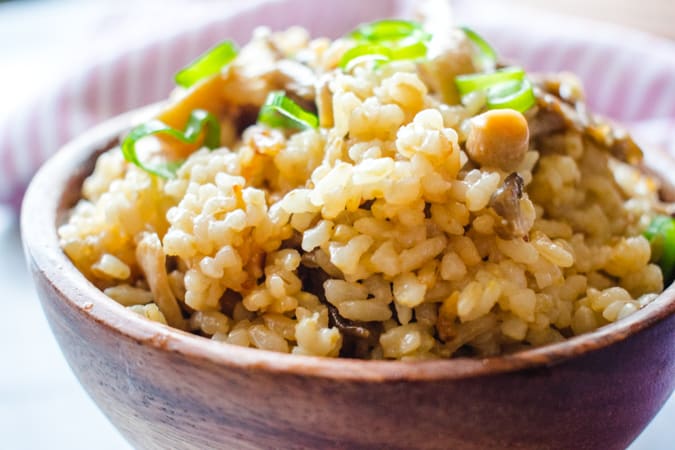
A warm, cozy bowl of mushroom rice is much less intensive than making mushroom fried rice.
Serve this with a creamy fresh corn soup, homemade kimchi, or paleo seaweed salad.
Japanese mushroom rice, also known as kinoko gohan, is often found in Japanese supermarkets as a ready to go meal. Usually with some meat and additional vegetables.
At home, I prefer making it just with mushrooms, in the rice cooker, for an EASY, one pot, vegetarian meal.
Regular Ingredients
- Brown Rice – since it’s healthier than white
- Mixed mushrooms – fresh or rehydrated shitake mushrooms, enoki mushrooms, king trumpets, oysters. Crimini mushrooms are ok but not traditional.
- Soy Sauce, Sake, and Mirin – standard Japanese flavoring agents
The Secret Ingredient
Butter.
It’s unorthodox, but it really makes this dish something special that you just crave over and over again.
How to Make Japanese Mushroom Rice
Step 1: Prep Rice in Rice Cooker
- Wash rice and add water along with a piece of dried kombu.
- Once the kombu blooms (about 10-15 minutes), remove and discard. Add soy sauce, sake, and mirin to the rice and water and mix.
Step 2: Slice vegetables
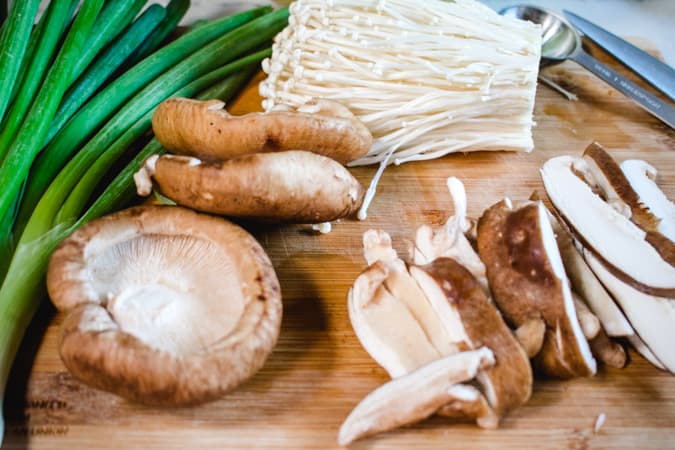
While the kombu seaweed is blooming, prep your mushrooms. Slice 1/4-1/2″ thick and discard any tough stems if using shitake mushrooms. Slice green onion if using for garnish.
Step 3: Layer in mushrooms and cook
- Pile the mushrooms into the rice cooker on top of the rice and water.
- It may look like a lot of mushrooms, but it will shrink.
Step 4: Add butter and fluff
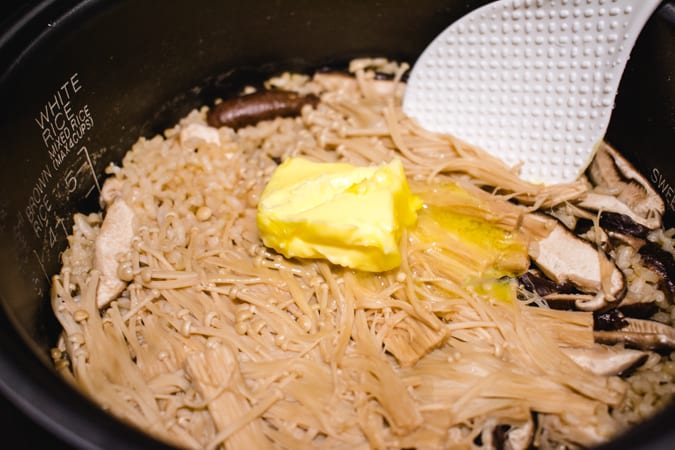
Once the rice is cooked, add butter and mix in gently. The bottom of the pot may be brown due to the soy sauce sinking to the bottom. Thus, the need to mix well.
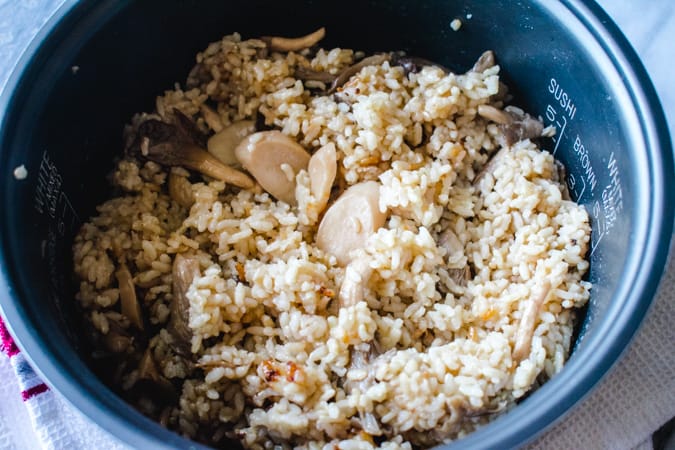
The mixed rice cooker will hold in the rice cooker for a few hours. You can also use this same recipe on the stovetop. This particular batch uses king trumpet mushrooms instead of shitake mushrooms.
Step 5: Garnish and serve hot
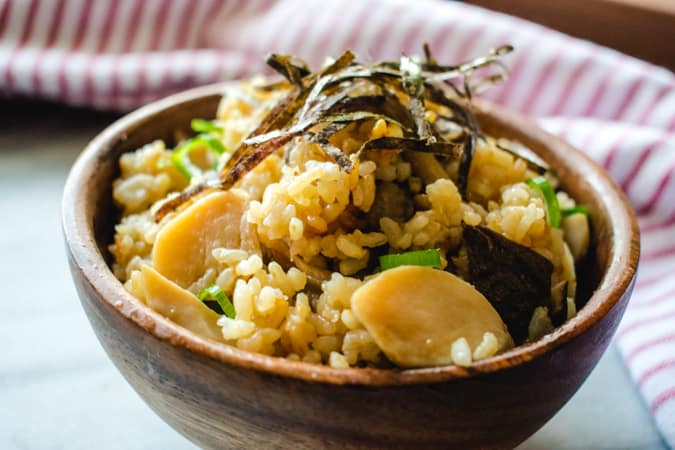
Top with green onion, nori strips, sesame seeds, and soy sauce too if you like.
Expert Tips
- You can use any type of mushroom you like, but for appearance and traditions, try to stick to anything except button mushrooms.
- Where this recipe goes wrong is if there is too much water. Most brown rice packages call for 1.5 – 2 times the amount of water to rice. However, since the mushrooms also release water into the rice, I use a 1:1 ratio of brown rice to water.
- If you must use white rice, reduce the amount of water to 2 cups white rice to 1.5 cups water.
- This does not freeze well. The mushroom and wet rice turn even mushier once defrosted.
- Add additional soy sauce when eating, if you need a saltier taste.
More Essential Rice Recipes
Vegan Kimchi Fried Rice is Fast & Luscious
Thai Black Rice Pudding: the Superfood you’re not Eating
The form you have selected does not exist.
Japanese Mushroom Rice
Ingredients
- 4 c mixed mushrooms, sliced enoki, oyster, shitake, trumpet, etc.
- 2 c brown rice
- 2 c water
- 1 g konbu about 2" square
- 2 Tb soy sauce
- 1 Tb sake
- 1 Tb mirin
- 3 Tb grassfed butter or vegan butter
Optional Garnish
- nori strips, green onion, sesame seeds
Instructions
- Rinse brown rice with water. Add to rice cooker with 4 cups water and dried kombu. Remove the kombu after 10-15 minutes.
- While the kombu rehydrates, slice the mushrooms. Pile into the rice cooker and cook.
- When rice cooker turns off, open and mix in the butter.
- Serve hot with optional garnish.
Notes
- You can use any type of mushroom you like, but for appearance and traditions, try to stick to anything except button mushrooms.
- Where this recipe goes wrong is if there is too much water. Most brown rice packages call for 1.5 - 2 times the amount of water to rice. However, since the mushrooms also release water into the rice, I use a 1:1 ratio of brown rice to water.
- If you must use white rice, reduce the amount of water to 2 cups white rice to 1.5 cups water.
- This does not freeze well. The mushroom and wet rice turn even mushier once defrosted.
- Add additional soy sauce when eating, if you need a saltier taste.
Nutrition
Do you love mushroom rice? Spread the ♥, and please share!
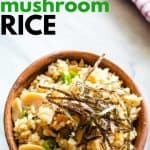
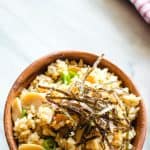
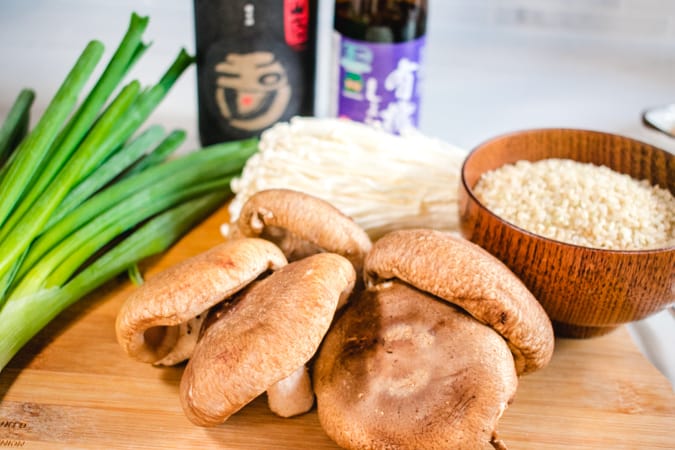
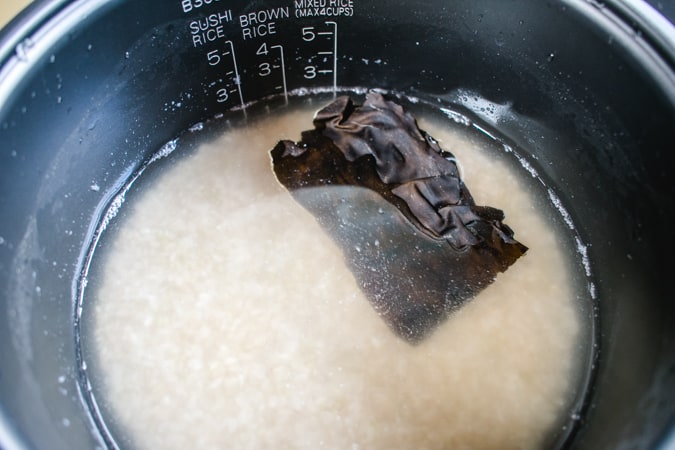
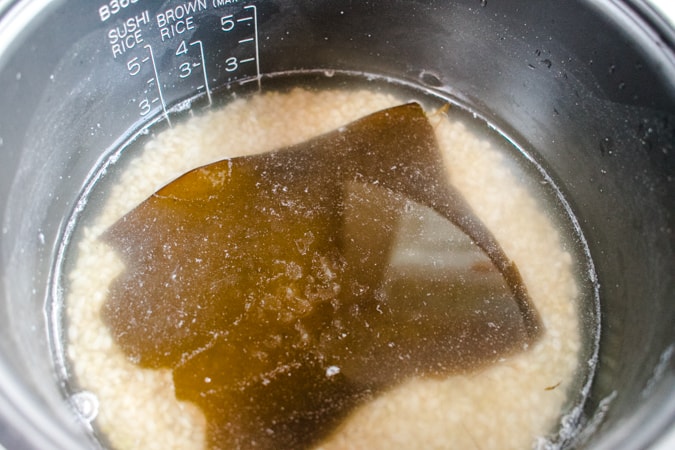
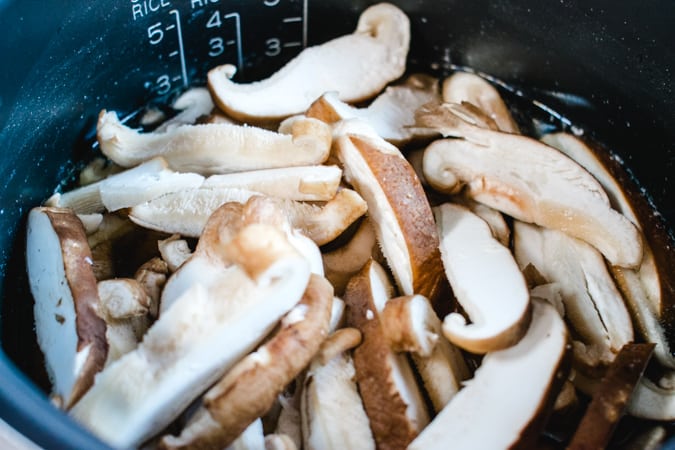
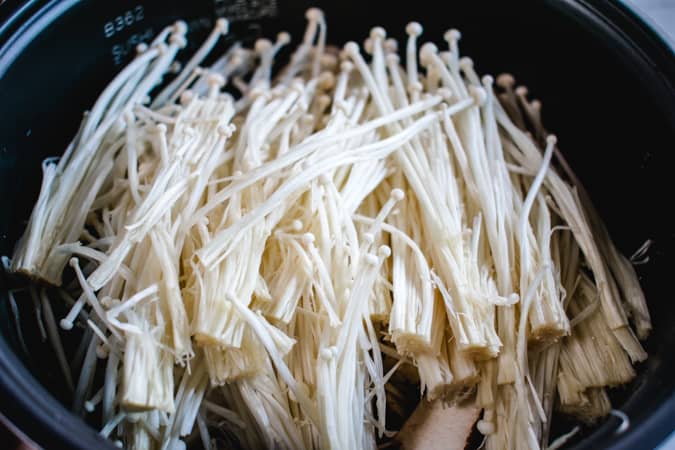
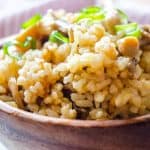

Courtney
Why do you remove the kombu after it rehydrates? What happens if you leave it in to cook?
[email protected]
If you leave it in, the kombu may get slimy and bitter if it’s boiled and cooked for too long. That being said, I have eaten it after it’s been boiled and not faced any dire consequences. Hope that helps!